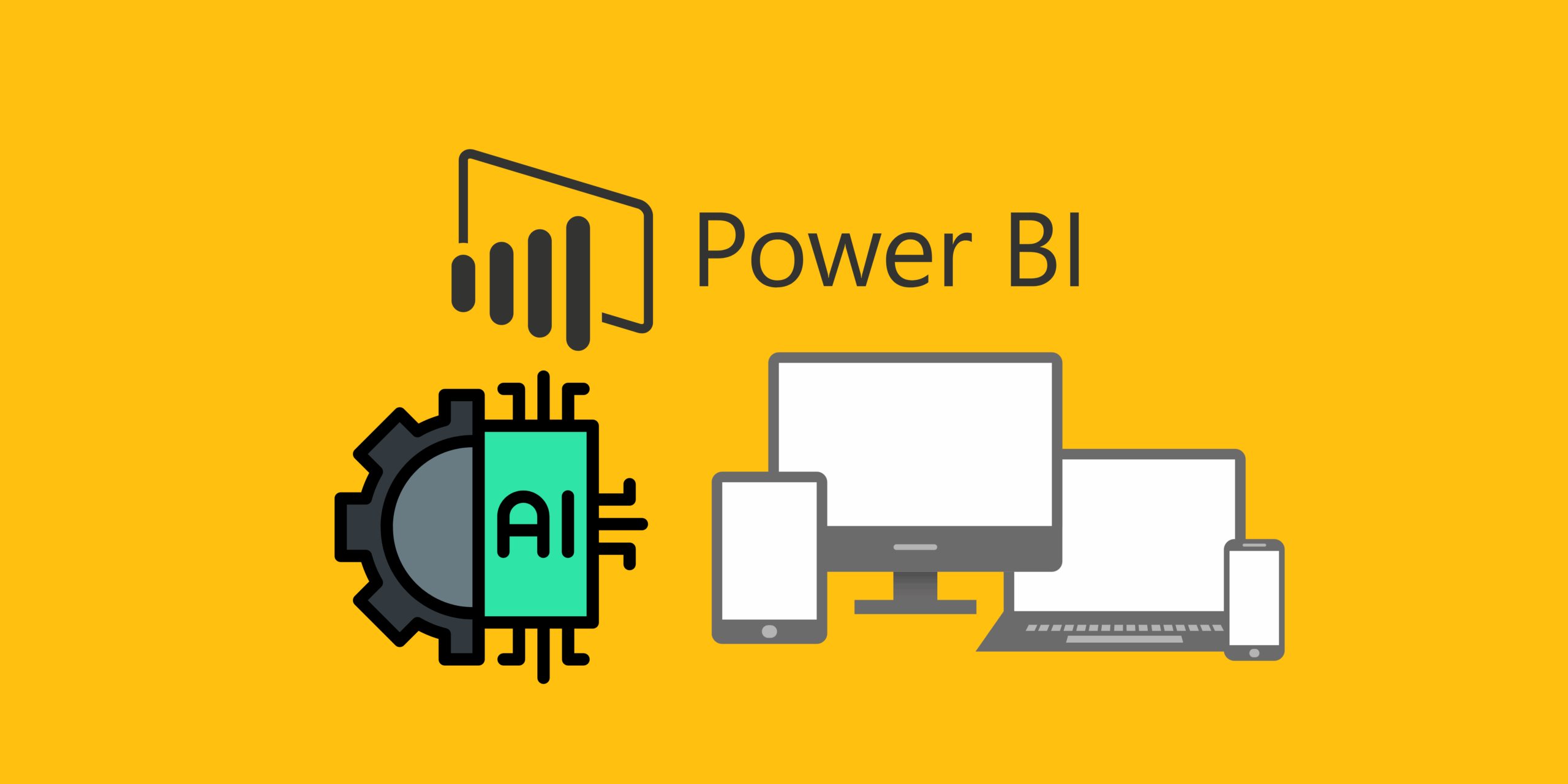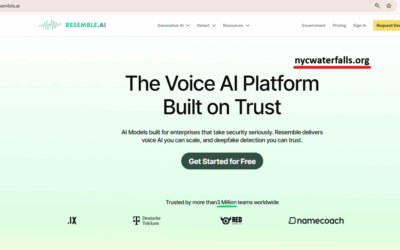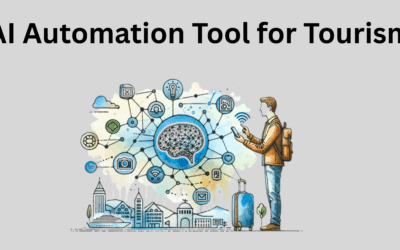Discover how Power BI integrates artificial intelligence (AI) to enhance data analysis, visualization, and decision-making. Learn about Power BI AI tools, features, real-world use cases, and how it compares to Tableau in the evolving world of business intelligence.
Introduction
Artificial intelligence (AI) transforms how organizations interact with their data in today’s data-driven business landscape. Microsoft Power BI, a business intelligence (BI) leader, incorporates AI capabilities to empower users with smarter insights, intuitive data analysis, and automation.
From advanced analytics to conversational BI, Power BI AI is becoming an essential tool for enterprises seeking to enhance their decision-making processes. But how exactly is AI embedded within Power BI, and how does it compare to other tools like Tableau? This article explores the depths of Power BI with AI, examining its tools, features, and growing capabilities.
Understanding the Role of AI in Power BI
Many often ask, “Is Power BI AI?” or “Is Power BI artificial intelligence?” The answer lies in its integration of AI tools rather than Power BI being an AI platform itself. Power BI is not AI, but it leverages artificial intelligence in Power BI to enhance data modeling, visualization, and storytelling.
With the increasing demand for BI and AI convergence, Microsoft has equipped Power BI with a suite of AI tools designed to simplify complex analytics.
Natural language processing, machine learning models, and Azure Cognitive Services power these capabilities. This blend allows even non-technical users to interact with their data using natural language queries in Power BI, unlocking AI-driven insights without coding or data science expertise.
The adoption of AI for Power BI is accelerating across sectors, especially as organizations look to streamline operations and predict trends through intelligent automation.
Exploring AI Features in Power BI: An Overview
One of the standout features of Power BI AI is the integration of AI visuals. These include tools like the Key Influencers visual, which helps users understand the factors affecting their KPIs, and the Decomposition Tree, which breaks down hierarchical data to uncover root causes.
These AI-based visuals in Power BI use statistical algorithms and machine learning to provide deeper insight into business operations.
The Q&A function, which uses natural language processing (NLP), is another essential part of Power BI AI tools.
Power BI gives users visual answers to questions they write in plain English. For example, typing “What were the total sales in Q4 2024?” will generate a chart with accurate data. This conversational BI experience simplifies data access and boosts productivity.
Power BI with AI also features automated machine learning (AutoML) within Power BI Premium and Power BI Dataflows, enabling users to train, validate, and deploy ML models without extensive technical skills.
These Power BI AI functions allow users to use historical data to predict outcomes such as churn rate, sales forecasts, or inventory needs.
Enhancing Data Analysis with Power BI AI Capabilities
The fusion of AI and Power BI is revolutionizing data analysis. Power BI’s integrated AI capabilities enable users to gain insights beyond descriptive analytics and into prediction and prescription. For instance, organizations using Power BI AI insights can more accurately identify customer behaviors, detect fraud, and forecast demand.
According to a Forrester study, businesses that deploy AI-infused BI platforms like Power BI experience a 33% improvement in data accessibility and a 23% boost in decision-making speed. These statistics reflect how Power BI AI analysis transforms traditional reporting into actionable intelligence.
AI visuals Power BI enables users to digest complex datasets with clarity and speed. Moreover, integration with ChatGPT and Power BI opens possibilities for generative AI, where business users can generate narrative explanations of visuals and dashboards, saving time and improving understanding.
Best Practices for Leveraging AI in Power BI Reports
Following certain best practices is essential to fully utilizing the potential of Power BI AI capabilities. First, ensure your data is clean and well-structured, as the effectiveness of AI in Power BI depends heavily on data quality. Leveraging AI features in Power BI, like the Key Influencers visual, requires a deep understanding of your KPIs and business goals.
Using AI for Power BI also involves thoughtful integration of AI visuals in Power BI that support storytelling rather than overwhelm with unnecessary complexity. For example, the Smart Narrative visual helps create easy-to-read summaries that align with the report’s overall message.
Another tip is to embrace AI-based automation. Power BI’s AutoML can significantly reduce manual analysis time by generating predictive models. Embedding AI-powered visuals in dashboards and sharing them with stakeholders enhances collaboration and transparency. Artificial intelligence with Power BI must be implemented strategically to generate value.
Real-World Applications of AI in Power BI for Business Intelligence
Across industries, Power BI AI tools are driving innovation. Retail companies use Power BI and AI to estimate sales patterns, examine consumer preferences, and improve pricing tactics. Healthcare providers use AI in Power BI to detect anomalies in patient data, ensuring early diagnosis and better treatment planning.
Manufacturing firms benefit from Power BI AI insights to monitor equipment performance, reduce downtime, and anticipate maintenance needs. Financial services use AI capabilities in Power BI for fraud detection and investment analysis. These functions help companies convert raw data into strategic decisions.
A global logistics firm, for instance, implemented AI for Power BI to reduce shipping delays by predicting high-risk zones. Within three months, the company saw a 17% decrease in lateness, demonstrating how integrating AI and Power BI transforms the operating environment.
What to Expect from Future Trends in AI and Power BI
There will soon be a closer connection between AI and power. Microsoft continues to enhance its Power BI generative AI capabilities, allowing users to build dashboards using voice commands or simple text prompts. These advancements align with the broader trend of AI-powered BI platforms that prioritize automation and user experience.
One of the upcoming trends is using AI visuals in Power BI supported by GPT models. For example, AI for Tableau and Tableau AI GPT are introducing similar tools, but Power BI AI currently leads in integration with Microsoft’s broader AI ecosystem. As a result, more companies are comparing Power BI vs. Tableau to determine the best fit for their BI needs.
The growing importance of natural language queries in Power BI signals a move toward democratized analytics, where every team member, regardless of technical background, can derive insights from data. Expect more intuitive dashboards, real-time predictive analytics, and expanded AI capabilities as the platform evolves.
Conclusion
In conclusion, Power BI AI is not just a feature—it’s a game-changer for modern business intelligence. Microsoft is redefining how users interact with data, from AI-powered visuals and AutoML to natural language queries. While Power BI is not AI, its integration with artificial intelligence tools makes it an invaluable asset for data professionals and business users.
When comparing Tableau vs. Power BI, many factors come into play. Tableau offers compelling AI tools like Tableau GenAI and Tableau AI features. Still, Power BI’s seamless integration with Microsoft services, comprehensive AI insights, and cost-effectiveness make it a strong choice. “Is Tableau or Power BI better?” would be addressed. Or “Are Tableau and Power BI the same?” The answer depends on your business goals. Still, Power BI with AI holds a significant edge in user accessibility and AI integration.
Both platforms offer robust solutions in the debate of Power BI versus Tableau, but the growing library of Power BI AI tools and continued innovation give it a strategic advantage. As Power BI and Tableau differences become more apparent with the rise of AI capabilities, businesses must assess their needs carefully.
By staying informed about Power BI AI analysis, AI features, and future trends, organizations can position themselves for success in a data-first economy. Whether you’re an analyst, executive, or developer, embracing artificial intelligence in Power BI is key to unlocking your data’s full potential.
FAQS
1. Is Power BI an artificial intelligence tool?
A. No, Power BI is not an AI tool itself. It integrates various AI features, such as machine learning, AI visuals, and natural language processing, to enhance business intelligence capabilities.
2. What are the key AI features available in Power BI?
A.A. AI-powered capabilities like Key Influencers, Decomposition Tree, Smart Narrative, Q&A with natural language questions, and AutoML are all included in Power BI. These tools help users gain predictive insights and analyze complex data effortlessly.
3. What are AI visuals in Power BI?
A. AI visuals are data visualizations powered by machine learning and statistical algorithms. Examples include the Key Influencers visual, which identifies factors driving specific metrics, and the Smart Narrative, which generates dynamic text summaries.
4. Is coding necessary to utilize AI features in Power BI?
A. Most AI features in Power BI, like AI visuals, Smart Narratives, and Q&A, are no-code or low-code, making them accessible to users without a technical background.
5. What are future trends for AI in Power BI?
A. Future trends include deeper generative AI integration, real-time predictive analytics, voice-enabled data interaction, and expanded automation features to simplify and accelerate business intelligence processes.



0 Comments